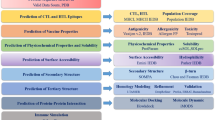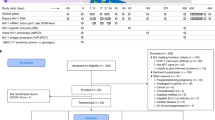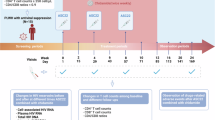Abstract
It is generally believed that CD8+ cytotoxic T lymphocytes (CTLs) play a critical role in limiting the replication of human immunodeficiency virus type 1 (HIV-1) and in determining the outcome of the infection, and this effect may partly depend on which HIV product is preferentially targeted. To address the correlation between HIV-1-specific CTL responses and virus replication in a cohort of former plasma donors (FPDs), 143 antiretroviral therapy naive FPDs infected with HIV-1 clade B' strains were assessed for HIV-1-specific CTL responses with an IFN-γ Elispot assay at single peptide level by using overlapping peptides (OLPs) covering the whole consensus clade B proteome. By using a Spearman's rank correlation analysis, we found that the proportion of Gag-specific CTL responses among the total virus-specific CTL activity was inversely correlated with viral loads while being positively correlated to CD4 counts, as opposed to Pol- and Env-specific responses that were associated with increased viral loads and decreased CD4 counts. In addition, Vpr-specifc CTL responses showed a similar protective effect with Gag responses, but with a much lower frequency of recognition. Significantly, we also observed an association between HLA-A*30/B*13/Cw*06 haplotype and lower viral loads that was probably due to restricted Gag-specific CTL responses. Thus, our data demonstrate the prominent role of Gag-specific CTL responses in disease control. The advantage of HLA-A*30/B*13/Cw*06 haplotype in viral control may be associated with the contribution of Gag-specific CTL responses in the studied individuals.
Similar content being viewed by others
Log in or create a free account to read this content
Gain free access to this article, as well as selected content from this journal and more on nature.com
or
References
Carrington M, Bontrop RE . Effects of MHC class I on HIV/SIV disease in primates. AIDS 2002; 16 Suppl 4:S105–S114.
Kawashima Y, Pfafferott K, Frater J, et al. Adaptation of HIV-1 to human leukocyte antigen class I. Nature 2009; 458:641–645.
Carrington M, O'Brien SJ . The influence of HLA genotype on AIDS. Annu Rev Med 2003; 54:535–551.
Brumme ZL, Brumme CJ, Carlson J, et al. Marked epitope- and allele-specific differences in rates of mutation in human immunodeficiency type 1 (HIV-1) Gag, Pol, and Nef cytotoxic T-lymphocyte epitopes in acute/early HIV-1 infection. J Virol 2008; 82:9216–9227.
Riviere Y, McChesney MB, Porrot F, et al. Gag-specific cytotoxic responses to HIV type 1 are associated with a decreased risk of progression to AIDS-related complex or AIDS. AIDS Res Hum Retroviruses 1995; 11:903–907.
Zuniga R, Lucchetti A, Galvan P, et al. Relative dominance of Gag p24-specific cytotoxic T lymphocytes is associated with human immunodeficiency virus control. J Virol 2006; 80:3122–3125.
Borghans JA, Molgaard A, de Boer RJ, Kesmir C . HLA alleles associated with slow progression to AIDS truly prefer to present HIV-1 p24. PLoS One 2007; 2:e920.
Kiepiela P, Ngumbela K, Thobakgale C, et al. CD8+ T-cell responses to different HIV proteins have discordant associations with viral load. Nat Med 2007; 13:46–53.
van Baalen CA, Guillon C, van Baalen M, et al. Impact of antigen expression kinetics on the effectiveness of HIV-specific cytotoxic T lymphocytes. Eur J Immunol 2002; 32:2644–2652.
Tenzer S, Wee E, Burgevin A, et al. Antigen processing influences HIV-specific cytotoxic T lymphocyte immunodominance. Nat Immunol 2009; 10:636–646.
Miura T, Brockman MA, Schneidewind A, et al. HLA-B57/B*5801 human immunodeficiency virus type 1 elite controllers select for rare gag variants associated with reduced viral replication capacity and strong cytotoxic T-lymphocyte [corrected] recognition. J Virol 2009; 83:2743–2755.
Schneidewind A, Brockman MA, Yang R, et al. Escape from the dominant HLA-B27-restricted cytotoxic T-lymphocyte response in Gag is associated with a dramatic reduction in human immunodeficiency virus type 1 replication. J Virol 2007; 81:12382–12393.
Addo MM, Yu XG, Rathod A, et al. Comprehensive epitope analysis of human immunodeficiency virus type 1 (HIV-1)-specific T-cell responses directed against the entire expressed HIV-1 genome demonstrate broadly directed responses, but no correlation to viral load. J Virol 2003; 77:2081–2092.
Cao J, McNevin J, Holte S, Fink L, Corey L, McElrath MJ . Comprehensive analysis of human immunodeficiency virus type 1 (HIV-1)-specific gamma interferon-secreting CD8+ T cells in primary HIV-1 infection. J Virol 2003; 77:6867–6878.
Betts MR, Ambrozak DR, Douek DC, et al. Analysis of total human immunodeficiency virus (HIV)-specific CD4(+) and CD8(+) T-cell responses: relationship to viral load in untreated HIV infection. J Virol 2001; 75:11983–11991.
Novitsky V, Gilbert P, Peter T, et al. Association between virus-specific T-cell responses and plasma viral load in human immunodeficiency virus type 1 subtype C infection. J Virol 2003; 77:882–890.
Pereyra F, Addo MM, Kaufmann DE, et al. Genetic and immunologic heterogeneity among persons who control HIV infection in the absence of therapy. J Infect Dis 2008; 197:563–571.
Kaufman J, Jing J . China and AIDS — the time to act is now. Science 2002; 296:2339–2340.
Zhang W, Hu D, Xi Y, Zhang M, Duan G . Spread of HIV in one village in central China with a high prevalence rate of blood-borne AIDS. Int J Infect Dis 2006; 10:475–480.
Su B, Liu L, Wang F, et al. HIV-1 subtype B' dictates the AIDS epidemic among paid blood donors in the Henan and Hubei provinces of China. AIDS 2003; 17:2515–2520.
Zhang L, Chen Z, Cao Y, et al. Molecular characterization of human immunodeficiency virus type 1 and hepatitis C virus in paid blood donors and injection drug users in China. J Virol 2004; 78:13591–13599.
Frahm N, Korber BT, Adams CM, et al. Consistent cytotoxic-T-lymphocyte targeting of immunodominant regions in human immunodeficiency virus across multiple ethnicities. J Virol 2004; 78:2187–2200.
Novitsky V, Cao H, Rybak N, et al. Magnitude and frequency of cytotoxic T-lymphocyte responses: identification of immunodominant regions of human immunodeficiency virus type 1 subtype C. J Virol 2002; 76:10155–10168.
Briggs JA, Simon MN, Gross I, et al. The stoichiometry of Gag protein in HIV-1. Nat Struct Mol Biol 2004; 11:672–675.
Shehu-Xhilaga M, Crowe SM, Mak J . Maintenance of the Gag/Gag-Pol ratio is important for human immunodeficiency virus type 1 RNA dimerization and viral infectivity. J Virol 2001; 75:1834–1841.
Sacha JB, Chung C, Rakasz EG, et al. Gag-specific CD8+ T lymphocytes recognize infected cells before AIDS-virus integration and viral protein expression. J Immunol 2007; 178:2746–2754.
Edwards BH, Bansal A, Sabbaj S, Bakari J, Mulligan MJ, Goepfert PA . Magnitude of functional CD8+ T-cell responses to the gag protein of human immunodeficiency virus type 1 correlates inversely with viral load in plasma. J Virol 2002; 76:2298–2305.
Ammaranond P, Zaunders J, Satchell C, van Bockel D, Cooper DA, Kelleher AD . A new variant cytotoxic T lymphocyte escape mutation in HLA-B27-positive individuals infected with HIV type 1. AIDS Res Hum Retroviruses 2005; 21:395–397.
Leslie AJ, Pfafferott KJ, Chetty P, et al. HIV evolution: CTL escape mutation and reversion after transmission. Nat Med 2004; 10:282–289.
Fernandez CS, Stratov I, De Rose R, et al. Rapid viral escape at an immunodominant simian-human immunodeficiency virus cytotoxic T-lymphocyte epitope exacts a dramatic fitness cost. J Virol 2005; 79:5721–5731.
Fernandez CS, Smith MZ, Batten CJ, et al. Vaccine-induced T cells control reversion of AIDS virus immune escape mutants. J Virol 2007; 81:4137–4144.
Wright JK, Novitsky V, Brockman MA, et al. Influence of Gag-protease-mediated replication capacity on disease progression in individuals recently infected with HIV-1 subtype C. J Virol 2011; 85:3996–4006.
Kaufmann DE, Walker BD . PD-1 and CTLA-4 inhibitory cosignaling pathways in HIV infection and the potential for therapeutic intervention. J Immunol 2009; 182:5891–5897.
Owen RE, Heitman JW, Hirschkorn DF, et al. HIV+ elite controllers have low HIV-specific T-cell activation yet maintain strong, polyfunctional T-cell responses. AIDS 2010; 24:1095–1105.
Muthumani K, Hwang DS, Dayes NS, Kim JJ, Weiner DB . The HIV-1 accessory gene vpr can inhibit antigen-specific immune function. DNA Cell Biol 2002; 21:689–695.
Majumder B, Venkatachari NJ, Srinivasan A, Ayyavoo V . HIV-1 mediated immune pathogenesis: spotlight on the role of viral protein R (Vpr). Curr HIV Res 2009; 7:169–177.
Srinivasan A, Ayyavoo V, Mahalingam S, et al. A comprehensive analysis of the naturally occurring polymorphisms in HIV-1 Vpr: potential impact on CTL epitopes. Virol J 2008; 5:99.
Saez-Cirion A, Lacabaratz C, Lambotte O, et al. HIV controllers exhibit potent CD8 T cell capacity to suppress HIV infection ex vivo and peculiar cytotoxic T lymphocyte activation phenotype. Proc Natl Acad Sci USA 2007; 104:6776–6781.
Betts MR, Nason MC, West SM, et al. HIV nonprogressors preferentially maintain highly functional HIV-specific CD8+ T cells. Blood 2006; 107:4781–4789.
Emu B, Sinclair E, Hatano H, et al. HLA class I-restricted T-cell responses may contribute to the control of human immunodeficiency virus infection, but such responses are not always necessary for long-term virus control. J Virol 2008; 82:5398–5407.
Yuan F, Sun YY, Luo Y, et al. Haplotype and linkage analysis of HLA-I classical genes in Chinese Han population. Zhongguo Shi Yan Xue Ye Xue Za Zhi 2007; 15:1084–1089.
Harrer EG, Bergmann S, Eismann K, et al. A conserved HLA B13-restricted cytotoxic T lymphocyte epitope in Nef is a dominant epitope in HLA B13-positive HIV-1-infected patients. AIDS 2005; 19:734–735.
Tang J, Tang S, Lobashevsky E, et al. Favorable and unfavorable HLA class I alleles and haplotypes in Zambians predominantly infected with clade C human immunodeficiency virus type 1. J Virol 2002; 76:8276–8284.
Honeyborne I, Prendergast A, Pereyra F, et al. Control of human immunodeficiency virus type 1 is associated with HLA-B*13 and targeting of multiple gag-specific CD8+ T-cell epitopes. J Virol 2007; 81:3667–3672.
Lichterfeld M, Yu XG, Cohen D, et al. HIV-1 Nef is preferentially recognized by CD8 T cells in primary HIV-1 infection despite a relatively high degree of genetic diversity. AIDS 2004; 18:1383–1392.
Acknowledgements
This project has been funded in part by the National Institute of Allergy and Infectious Disease, National Institutes of Health (N01-AI-30024), the China Mega-Project for Infectious Disease (2008ZX10001-010), International Cooperation in Science and Technology from the Chinese Ministry of Science and Technology (2006DFA31510) and the National Nature Science Foundation of China (81172809, 81020108030). We thank Rebecca Armstrong for critical reading of the manuscript.
Author information
Authors and Affiliations
Corresponding author
Additional information
( Supplementary information is linked to the online version of the paper on the Cell Research website.)
Supplementary information
Supplementary information, Table S1
Correlations between HIV-1 specific CTL responses and disease progression. (PDF 70 kb)
Supplementary information, Table S2
CTL responses against HIV-1 proteins of 14 elite controllers and 17 AIDS patients (PDF 69 kb)
Supplementary information, Figure S1
Correlation of the magnitude and contribution of HIV-1-specific CTL response with CD4 counts. (PDF 70 kb)
Supplementary information, Figure S2
Correlation of the breadth and contribution of HIV-1-specific CTL response with CD4 counts. (PDF 68 kb)
Rights and permissions
About this article
Cite this article
Jia, M., Hong, K., Chen, J. et al. Preferential CTL targeting of Gag is associated with relative viral control in long-term surviving HIV-1 infected former plasma donors from China. Cell Res 22, 903–914 (2012). https://doi.org/10.1038/cr.2012.19
Received:
Revised:
Accepted:
Published:
Issue date:
DOI: https://doi.org/10.1038/cr.2012.19
Keywords
This article is cited by
-
Genome-Wide Association Studies of HIV-1 Host Control in Ethnically Diverse Chinese Populations
Scientific Reports (2015)
-
Plant-based vaccines against viruses
Virology Journal (2014)



